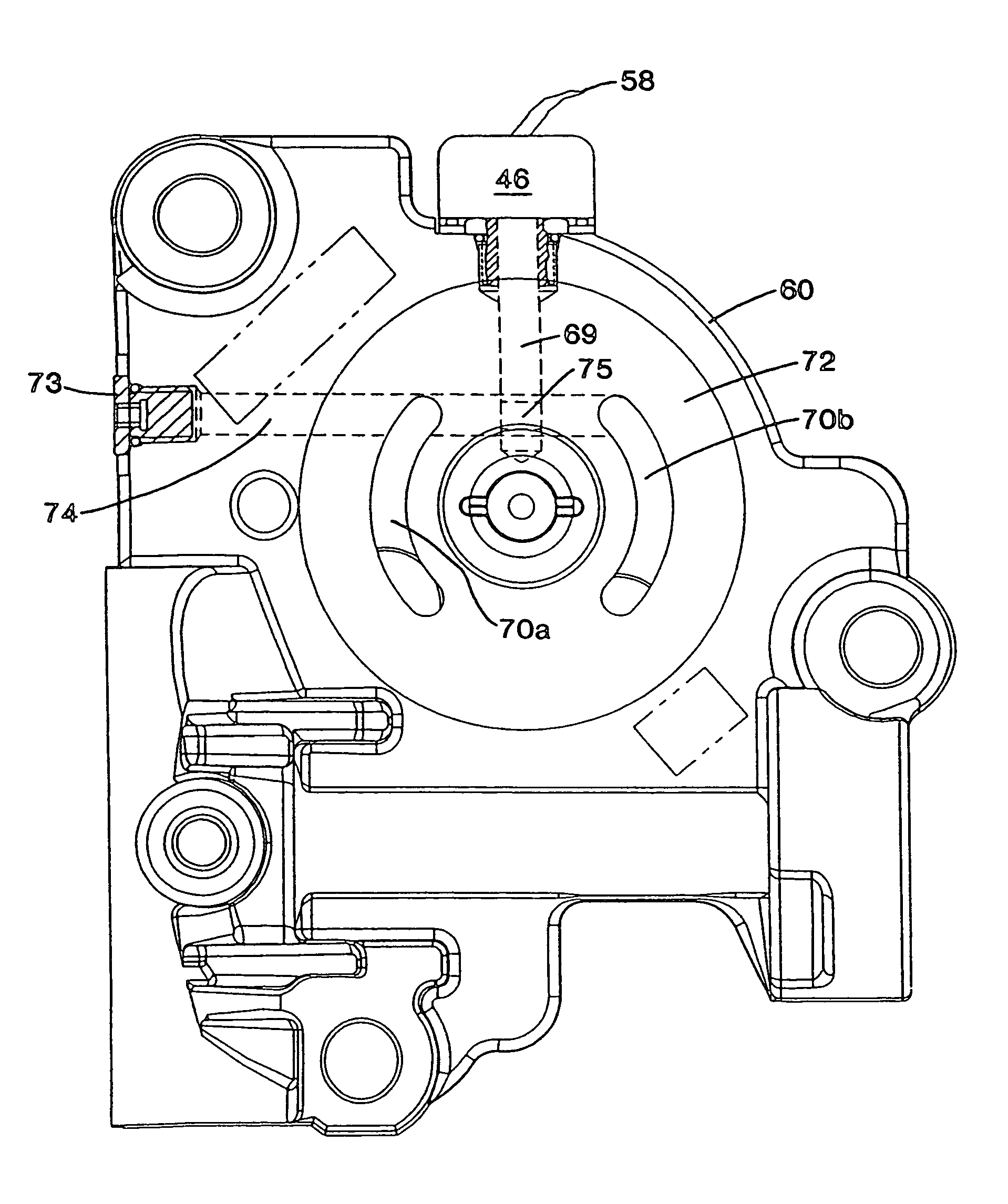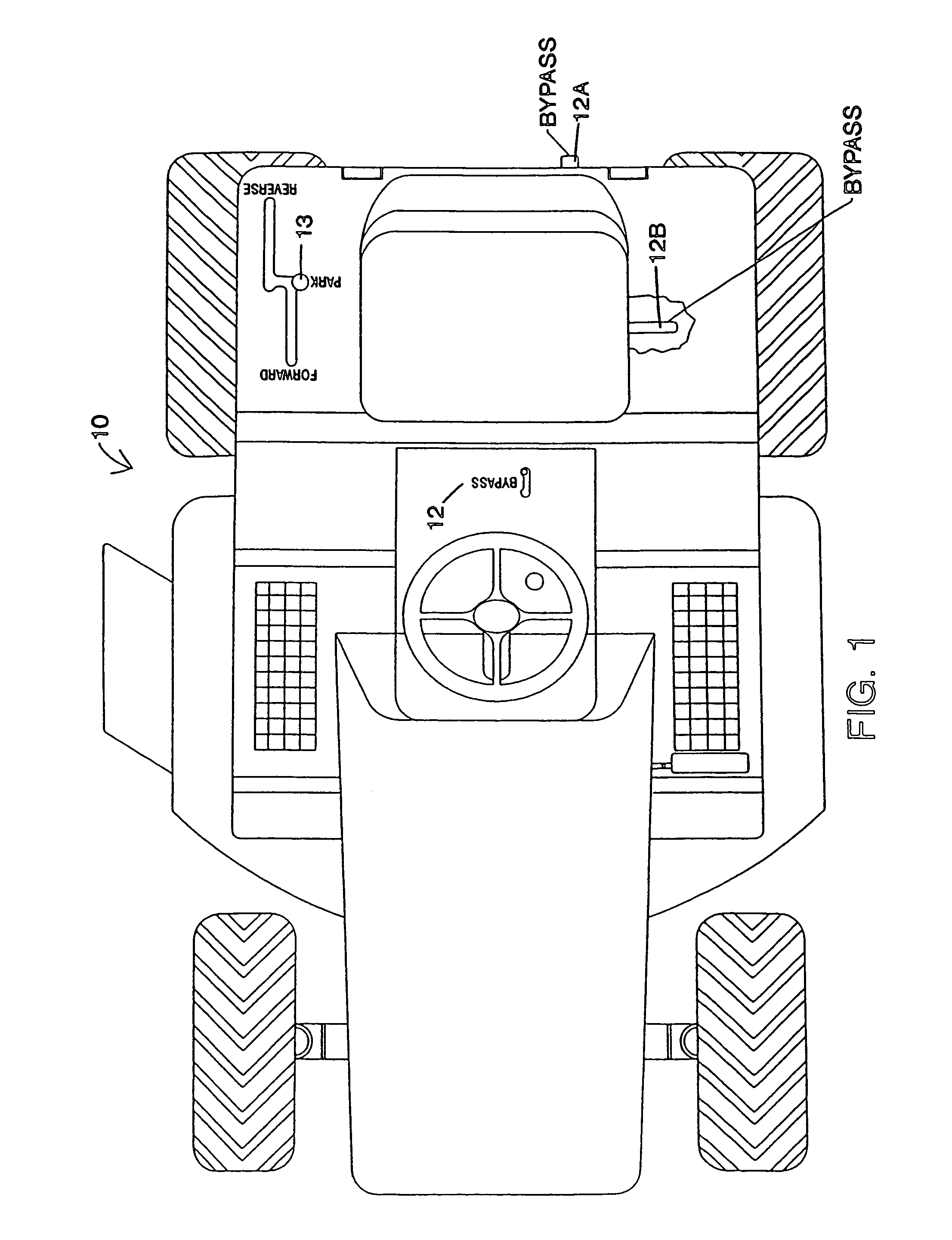Bypass for a hydraulic device
a technology of hydraulic device and bypass, which is applied in the direction of fluid couplings, clutches, gearing elements, etc., can solve the problems of inability to manually move the vehicle, prior art design drawbacks, and uncontrolled free-wheeling of the vehicl
- Summary
- Abstract
- Description
- Claims
- Application Information
AI Technical Summary
Benefits of technology
Problems solved by technology
Method used
Image
Examples
Embodiment Construction
[0036]FIG. 1 is a view of a typical vehicle using a integrated hydrostatic transmission, namely tractor 10, showing various locations of control mechanisms for mechanical bypass units. Different tractor manufacturers have different preferences for location of the mechanical bypass actuator, making it difficult for an IHT manufacturer to design a single unit for all uses without expensive design modifications or use of additional linkages to accommodate such uses. For example, the bypass 12 may be located on the panel immediately in front of the seat. Other manufacturers prefer to have it mounted in location 12A at the rear of the tractor, while others require it to be located under the tractor seat at location 12B. Control lever 13 is generally used to control direction and speed of the vehicle.
[0037]A typical control arm 14 is shown in FIG. 2, and is generally attached to the external housing of the IHT unit. The tractor manufacturer will generally attach its own levers and linkage...
PUM
 Login to View More
Login to View More Abstract
Description
Claims
Application Information
 Login to View More
Login to View More - R&D
- Intellectual Property
- Life Sciences
- Materials
- Tech Scout
- Unparalleled Data Quality
- Higher Quality Content
- 60% Fewer Hallucinations
Browse by: Latest US Patents, China's latest patents, Technical Efficacy Thesaurus, Application Domain, Technology Topic, Popular Technical Reports.
© 2025 PatSnap. All rights reserved.Legal|Privacy policy|Modern Slavery Act Transparency Statement|Sitemap|About US| Contact US: help@patsnap.com



